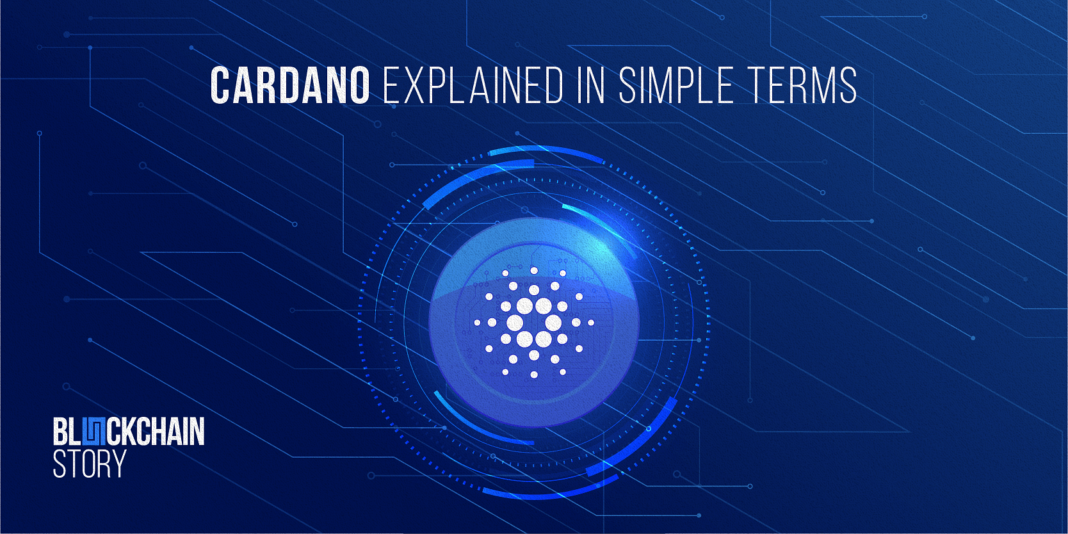(It may help to read our explainer articles on Blockchain and Ethereum before reading this article on Cardano. The background information may help readers develop a better understanding of some of the concepts explained in this article.)
Blockchain technology is yet to reach mainstream adoption across sectors, but developers have already moved from building first generation blockchains to second and third generation ones.
Ethereum, a second generation blockchain, was originally built to address scalability issues of Bitcoin, which is a first generation blockchain.
Besides performing financial transactions, Ethereum allows users a greater degree of programmability. It allows developers the ability to experiment with code and build decentralised applications (DApps) on the Ethereum blockchain.
Now, a third generation of blockchains, which seek to improve on Ethereum, have emerged.
One of the top names of this generation is Cardano, a project developed by the technology company Input Output Hong Kong (IOHK). In fact, IOHK was founded by Charles Hoskinson, who was one of the co-founders of Ethereum.
Hoskinson left Ethereum after a dispute with another co-founder, Vitalik Buterin, because Hoskinson wanted to turn Ethereum into a for-profit entity, but Buterin did not concur.
What is Cardano?
In 2017, Hoskinson launched Cardano as a public, open-source, decentralised blockchain with a proof of stake consensus (PoS) system.
(The PoS system is explained later in this article)
Not only does a PoS system provide an edge over Ethereum’s proof of work (PoW) in terms of energy use and hardware requirement, but also allows for Ethereum-like smart contracts and peer-to-peer transactions.
As such, Cardano is placed among the ‘Ethereum-killers’ – a set of third-gen blockchains that seek to gain an edge over Ethereum.
Some of the other top Ethereum killers include Binance Smart Chain (BSC), Solana (SOL), and Polkadot (DOT).
In the Cardano blockchain, the native currency is ADA, which is used to perform transactions on it.
Image: Daisy Mahadevan
Smart contract functionality
As a third generation blockchain, Cardano offers a settlement layer like Bitcoin (for transactions), and a computation layer like Ethereum (for smart contracts and decentralised apps).
But it was only recently that Cardano enabled smart contract and Decentralised Finance (DeFi) functionality. In September 2021, a major upgrade named ‘Alonzo‘ allowed smart contracts to be created and deployed on the Cardano mainnet.
Till then, Cardano was seen by some as merely hype, since its smart contract functionality was promised from the start but took four years to become reality.
This is partly because developments and network upgrades on Cardano are peer-reviewed by experts, and this thorough testing results in relatively slower rollout times.
Advantages over Ethereum
Despite slow rollout times, Cardano’s PoS consensus system still remains an advantage over Ethereum. Like Bitcoin, Ethereum has a scalability and congestion problem.
Its proof-of-work model is energy-intensive, as miners utilise large amounts of electricity to solve puzzles set by the protocol and create blocks.
It usually maxes out at processing up to ten transactions per second (TPS), which is quite low for a platform hosting DApps that seek to attract millions of global users.
Cardano’s PoS system, however, requires miners to stake their own crypto to be eligible for block rewards. The platform then chooses a few top miners for authenticating transactions. Thus, the amount of energy and time required is reduced considerably. Reportedly, Cardano has already managed to touch over 250 TPS.
Its upcoming solution for Layer 2 scalability – Hydra – is rumoured to be able to accelerate transactions on Cardano to over 1 million per second.
Cardano vs Ethereum
Like other Ethereum-killers, Cardano has the potential to eventually overtake Ethereum. But it still has a long way to go in terms of adoption.
Ethereum is the second-most popular blockchain in the world, behind Bitcoin, and its DeFi and NFT capabilities have turned it into a widely-used crypto asset. Its native token Ether (ETH) reached its all-time high (ATH) of $4,356.99 on May 12, 2021.
In comparison, Cardano’s smart contract functionality is barely a month old at the time of publishing this article, and this blockchain will require more time to attract a large set of users. ADA’s all-time high of $3.09 was achieved on September 2, 2021.
Going forward, it is unlikely that it will be a smooth sailing for Ethereum-killers. While the likes of Binance Smart Chain and Solana have already achieved moderate adoption, the developers at Ethereum are not biding their time, waiting to be overtaken.
Ethereum 2.0
In a set of upgrades collectively known as Ethereum 2.0, the Vitalik Buterin-founded blockchain is well on its way towards moving away from proof-of-work and adopting proof-of-stake consensus.
It is also adopting a set of network upgrades, such as sharding, Ethereum Plasma, and rollups, which seek to improve Ethereum’s performance and drastically increase its TPS.
There are also a range of Ethereum Layer 2 scaling solutions, such as Polygon, that allow users to perform cheaper transactions off-chain at a faster pace.
Thus, it remains to be seen if a third generation blockchain like Cardano will overtake Ethereum to become the dominant smart contract platform.
Perhaps, there could emerge fourth generation blockchains that perform even better than Cardano, in which case the Charles Hoskinson-founded platform will have to be quicker to react.
YourStory’s flagship startup-tech and leadership conference will return virtually for its 13th edition on October 25-30, 2021. Sign up for updates on TechSparks or to express your interest in partnerships and speaker opportunities here.
For more on TechSparks 2021, click here.






